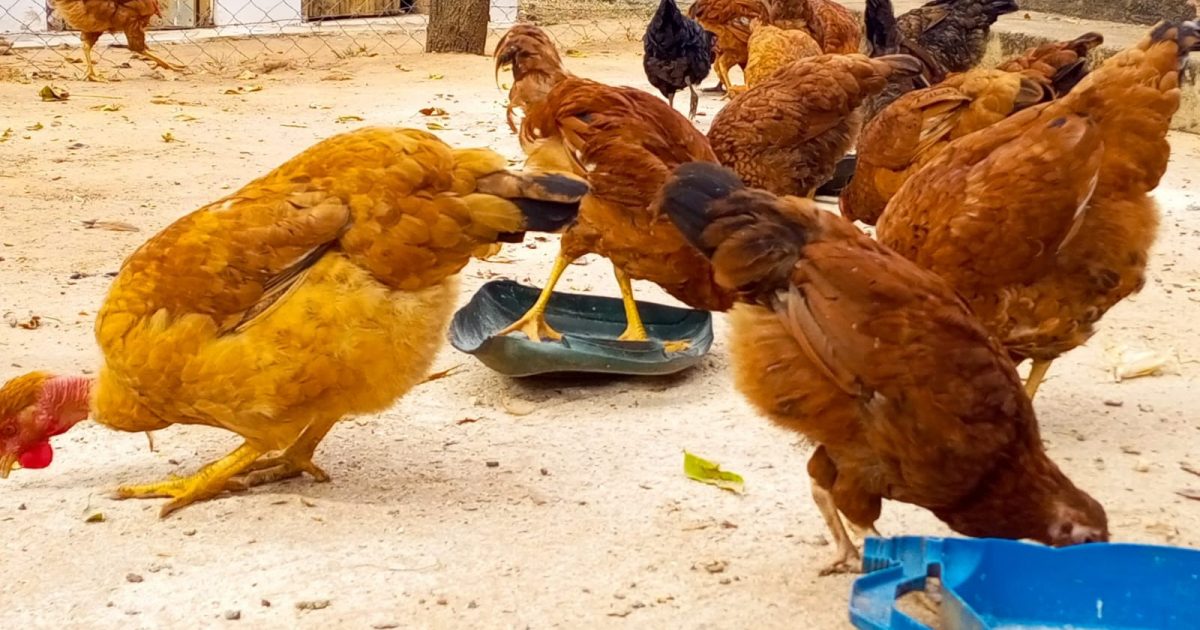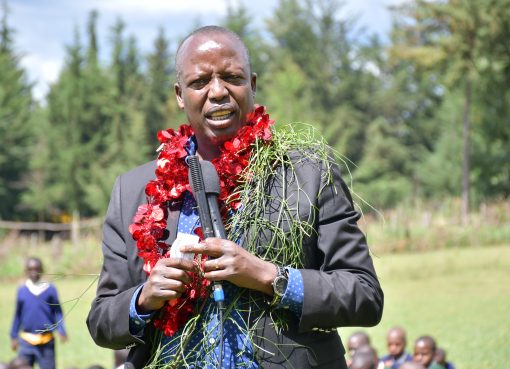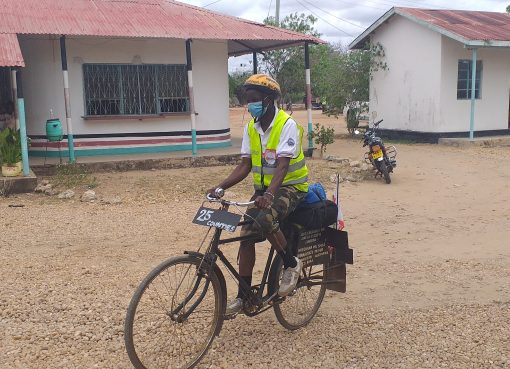The rearing of indigenous Chicken has proved to be a viable income generating venture among small scale poultry farmers in rural areas in an effort to pull out of the poverty bracket.
Such chicken fetch higher prices in the local market compared to broilers but challenges of disease control hinder majority of women who venture into poultry farming to realize their full potentials in terms of returns.
Many homes across the country keep chickens for subsistence purposes in their homesteads but do not fully exploit their production prospects well as a pathway through which they go use modern technology to expand their capacity and make poultry farming a viable income generating activity to cross the poverty line.
However the small holder farmers may soon have a solution for the diseases affecting their productivity, Thanks to a recent research study implemented to enhance the delivery and distribution system to a Gender Inclusive Vaccine Ecosystem (GIVE) for Newcastle disease among smallholder women farmers.
The research undertaken by the Kenya Agricultural and Livestock Research Organization (KALRO), in collaboration with University of Nairobi (UON), and Cooperative University of Kenya (CUK) have been implementing a four-year vaccine research study that has seen Women move from lower socioeconomic ladder to the upper socio economic ladder.
Professor Salome Bukachi, a lecturer and Associate Professor at the Institute of Anthropology, Gender and African Studies of the University of Nairobi and Principal Investigator of the GIVE study project funded by the International Development Research Centre (IDRC) says many women have chicken but not using them to build themselves or even empower themselves.
She explained that as opposed to Cows, the study found that women had an upper hand decision making and control on the chicken owing to the deliberate focus to empower them.
Prof. Bukachi said a case study of Makueni County found that rearing of indigenous chicken was quite high compared to other regions although only 30 percent of the county potential was utilized.
She said in 2020 the research indicated that Makueni County realized at least Ksh.7 billion in earnings from poultry farming despite outbreaks of Newcastle disease which is the most significant constraint to chicken productivity and was endemic with frequent recurrence of outbreaks throughout the year.

Prof Bukachi said the disease can easily be prevented if the uptake of the vaccination was improved and thus the reason why the study was done to establish the barriers in access to poultry vaccine
She said the four year study found that biggest barrier was the low uptake vaccine which stood at 15 percent, the long distance farmers covered to access a certified agro vets and lack of smaller packages doses of vaccine vials as those available were in sets of 100 vials which were not affordable to small holder farmers who had limited knowledge and skills in improved poultry management practices.
She said the total chicken population in Makueni County is over 1.2 million, 94 percent of them are indigenous and kept by around 65 percent of the household with each have an average of around 30 to 50 birds.
“ There are a lot of diseases that impact on the productivity of chicken and one of them is the New Castle disease which wipes chicken all at once and farmers have to start all over again from scratch” Prof Bukachi.
KALRO Research scientist Dr. Judith Chemuliti, said the Newcastle disease is a significant constraint to chicken production because it causes high mortality, often of the entire flock, denying farmers the opportunity to earn better incomes and improve their livelihoods.
“Newcastle disease vaccines are available, effective, and easy to use, but most farmers do not vaccinate due to inadequate knowledge and limited access to vaccines”, she explained.
Gender inequity, she emphasized exists in the vaccine supply chain with most women being users in the lower node and thus sustainable access and utilization of vaccines through collective action will enhance chicken leading to better incomes and household nutritional outcomes
Dr. Chemuliti, who was also the Co-Principal Investigator of the project said the research was carried out in Kathonzweni and Kitise ward in Makueni sub-county; Makindu and Kikumbulyu North in Kibwezi West sub-county and Masongaleni and Mtito-Andei wards in Kibwezi East Sub- County.

Annes home. Picture by Wangari Ndirangu
She noted that they were able to test a vaccine delivery model that would supply vaccines sustainably and cost-effectively, trained 626 farmers on chicken husbandry, gender & group formation, trained 124 community chicken vaccinators mostly women and also helped establish 4 vaccine storage points and advisory centers that were stocked and would sell vaccine s to farmers.
“The outcomes saw a steady 37 percent increase in chicken vaccination, that covered over 253 households where at least 257,609 chickens were inoculated in a year in 3 rounds thereby reducing mortality of birds by 30 Percent.
Dr. Chemuliti said some of the output of the research came up with a policy brief, a training manual on the training of community vaccinators and research publications in peer reviewed journals that were shared with the County government of Makueni
Speaking when receiving the materials, Makueni County Executive Committee (CEC) livestock fisheries and co-operatives Joyce Mutua , said the county was one of the leading counties in the top five in poultry production in the country.

She observed that there has been an upward uptake of adopting chicken as a value chain but farmers have been facing the challenge of the Newcastle disease causing huge losses.
“While we have been promoting the poultry value chain as a pathway out of poverty, the challenge of disease outbreak has remained the main constraint. We are happy by the work done by the team that was doing research especially on how farmers can be able to access the vaccines at the grassroot level
Mutua added that the model will work for the county as they had been providing vaccines from the County headquarters, but now having centres at ward level it will be easier for farmers to access at scheduled times.
“We are happy with the findings that we can reduce the cost of storage if we deliver this on scheduled periods. We are going to work around the same models to see how farmers can get the new castle vaccines every three months”, she said.
The CEC also thanked the project findings saying the county will use the model of trained community vaccinators as most farmers do not know how to go about handling the vaccines.
“We want our farmers to increase the number of birds from the current 1.4 million by distributing day-old chicks so that they can expand their hutch size to grow . We want them to move from 50 chickens per homestead to around 200 and even above”, Mutua said
The CEC further confirmed that they had opened discussions with large scale chicken buyers to agree on minimum prices to ensure that farmers were not exploited by brokers when seeking marketing outlets for their birds.
“When we do our math, our minimum prices should see a farmer get a minimum of Kshs 600 per chicken”, she said adding that the South Eastern Kenya Economic (SEKE) Bloc which brings together Machakos, Makueni and Kitui counties were planning on coming up with a marketing authority entity that will work with farmers and traders to facilitate access to markets for agriculture produce.
Anna Matheka, a poultry farmer from Kathonzweni and who is now vaccinating her chicken after being trained through the project said that since they acquired training on vaccination of chickens, her chickens have stopped dying and she has been able to also increase them in number.
We used to give treat our chicken with traditional medicines but they continued to die, once I started vaccination and getting the service from, my neighbor who is a community vaccinator and for a minimal fee of Ksh 5 per dose , my production has increased”, she said
Matheka, who is supported by her husband, said set off with less than 30 chickens but now had a stock of 150 birds which improved her lifestyle as she sells her chicken at good prices but she has upgraded and managed to buy a few goats.
The poultry population in the region is estimated at 29.6 million birds with the Indigenous chickens making about 80 percent of the stock which are mainly reared in rural households where they contribute to food security, income and social-cultural roles.
By Wangari Ndirangu




